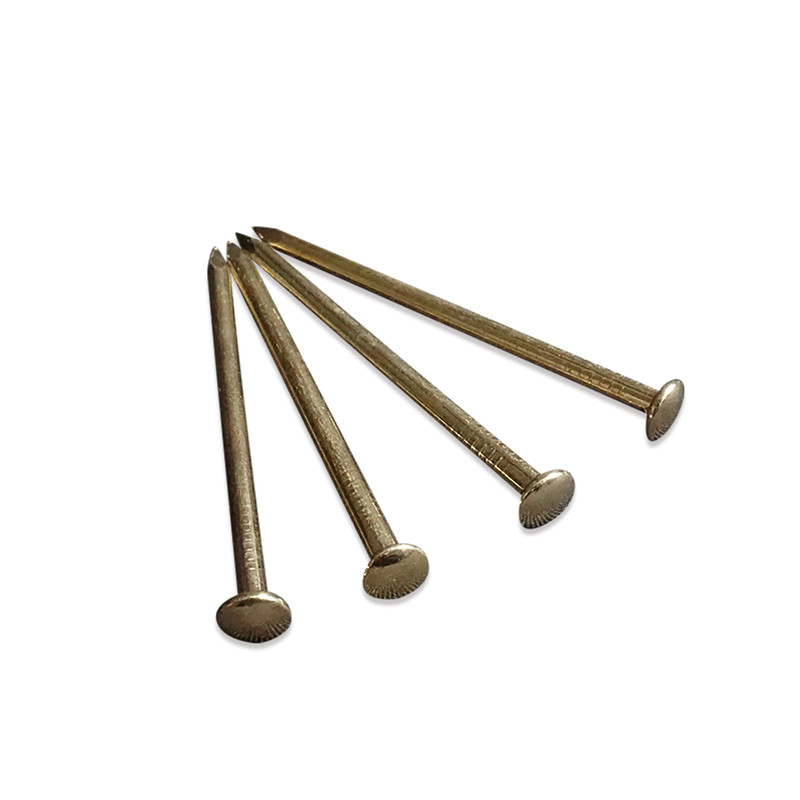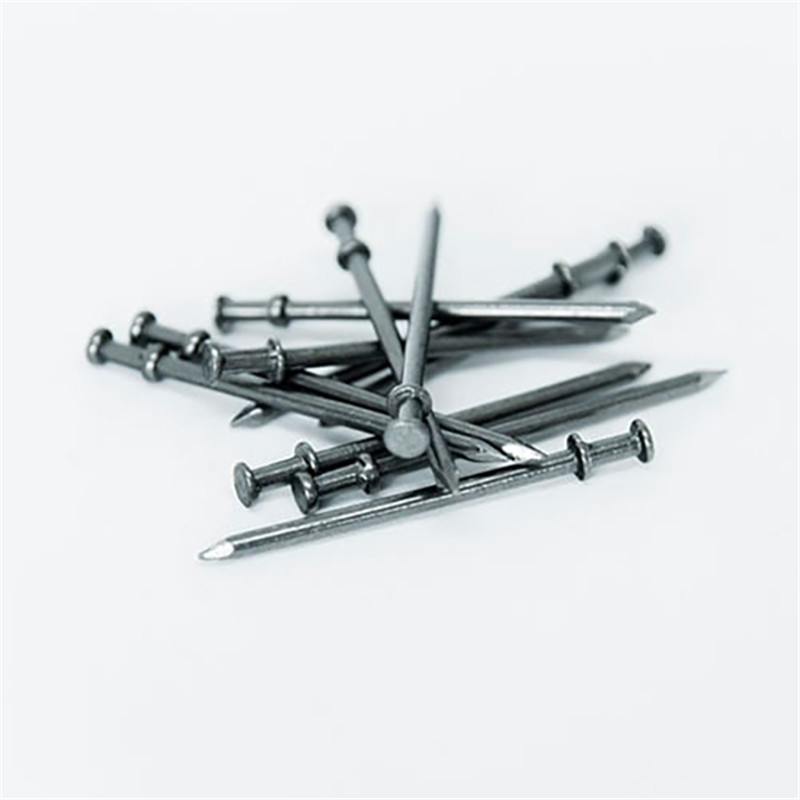Professional Tool Reviews for Pros
For light-duty projects like tacking up door trim and baseboards, you already know you need a nailer smaller than a framing nail gun. However, with all the different kinds of nailers to choose from, it can take time to pick the right one. To get started, learn about the differences between a brad nailer vs a finish nailer. Fastener

Brad nailers use 18-gauge nails, also called brads or brad nails. Individually, these small nails look more like wire. In fact, they are made from wire. They come in a sleeve that fits into the magazine of the nail gun. This makes them easy to load and use. Brad nails come in various lengths, usually from ½ inch all the way up to 2 inches.
Brad nails have smooth sides and a very small head. As such, professionals and DIYers use brad nailers on projects that don’t require a lot of fastening strength. They work well for holding lightweight materials in place, such as trim, paneling, beadboard, and more. Brad nails typically find their use in interior applications. Used outside, the thin brad nails could loosen over time from the constant swelling and contracting that happens when materials get wet outdoors.
One of the best things about Brad nailers is that they leave a very small hole. They require very little filler before painting. Brad nails—while thin—work especially well to hold materials in place, especially when combined with glue. They also don’t split the wood due to their slender profile.
Additionally, you can adjust the depth setting for most brad nailers. When using brad nails in softer materials, this lets you ensure it doesn’t go all the way through.
Brad nailers can be pneumatic or cordless (battery-powered). While pneumatic air hoses present a challenge when dragging them around, pneumatic tools cost and weigh much less. Battery-powered brad nailers let you use them anywhere you need to. They also have plenty of power for the job. Increased weight remains the only key downside.
A finish nailer uses a 15 or 16-gauge nail, which is slightly larger than a brad nailer. This is because the thickness of the metal determines nail sizes, and the larger the number, the thinner the nail. Finish nails are also longer than brad nails, usually available in lengths from 1 inch to 3½” inches.
Since finish nailers use slightly thicker nails, they can be used for heavier-duty applications. This includes nailing baseboards or thicker trim around interior doors and windows. We even used a finish nailer when installing beadboard on a porch roof.
Just like brad nails, finish nails also come in sleeves that fit into the magazine. On these tools, everything scales just a little bit larger to accommodate the increased nail size.
Naturally, finish nails leave a larger hole than brad nails. They still have pretty small heads, so you can typically dab a little caulk, putty, or wood filler to fill up a hole before painting. The thicker finish nails do make it easier to split thin pieces of wood or trim. You might need to size down to a brad nailer to keep that from happening when working with delicate trim.
Like Brad nailers, you can find both pneumatic and battery-powered finish nailers. However, while both types can use compressed air, the battery-powered models use an onboard air cylinder that repressurizes every time you fire a nail. With this technology, battery-powered nailers perform just as well as traditional pneumatic nailers, though they weigh a lot more. And although cordless nail guns are usually more expensive, they don’t require a compressor.
Editor’s Note: We recommend avoiding battery-powered nailers that use a “flywheel” mechanism. In addition to taking longer to fire a nail, they typically weigh more. They also feature increased bulk over models using compressed nitrogen gas.
There are many different types of nail guns, making it hard to choose the right one for your project. Just ensure you match the nail size and gauge to the job at hand. Use thicker nails with larger heads for more holding power. Opt for thinner nails with smaller heads for more delicate work.
Here is a complete rundown on the differences between brad nailers and finish nailers, including their differences and similarities.
Brad nailers are the perfect choice for many types of finishing projects. A brad nail doesn’t split thin wood, making this nailer (and nail) ideal for small trimming and molding jobs. They leave small holes that you don’t need to fill in later, saving you a lot of time.
A finish nailer still works well for trim work. They can handle thicker wood and they add more strength to your projects. Since finish nails are bigger than brad nails, they can split wood. You also need to fill in their holes with putty before painting.
Here are some of the differences between brad nails and finish nails at a glance:
Are you wondering which type of nailer to use for your project? Here is a list of common projects that these nailers are perfect for:
Both brad nailers and finish nailers are easy to use and are perfect for beginners and professionals alike. They are both available in a variety of options, including corded electric nail guns that require an air compressor and cordless battery-powered nail guns with onboard compressor technology.
Brad nailers and finish nailers are more alike than they are different, which is why it’s hard for many novices to tell them apart.
As their nickname implies, all nail “guns” are designed after and closely resemble their namesake. After all, they include triggers, magazines, safeties, and other features.
Both brad nailers and finish nailers have the following features:
Because there is some overlap in the length of nails that they use and the types of projects that they can be used for, it can get a little complicated trying to decide between brad nailers and finish nailers.
Choosing the best nailer for your project comes down to the specifics of your individual project and deciding what works best for you. Keep in mind the size and gauge of the nails and whether you’re working on an interior or exterior project to help you decide.
Here are the main factors to consider when you’re choosing between a brad nailer vs a finish nailer.
Project type – more delicate applications benefit from the more delicate brad nailers, while heftier projects can make use of the extra power a finish nailer provides.
Nail size – there is some overlap in the length of nails available for brad and finish nailers, so the thickness or gauge of the nails is a better metric to help you determine which one to use.
Required depth – finish nailers can drive nails deeper than brad nailers, which is why they work with nails almost twice as long as brad nailers.
Budget – Brad nailers are slightly less expensive than finish nailers, so if you’re looking to save a little money and everything else is equal, this could be the deciding factor for you.
No matter which type of nailer you decide to get, you can rest assured that it will make your woodworking projects easier, and if you’re like most power tool connoisseurs, it’s easy to find a reason why you need them both!
In short, Brad nailers can’t replace finish nailers. Choosing the right nailer for your project requires assessing the size of nails you need and how deep they need to go, and some projects are just too big for a brad nailer. However, there are some projects that you could use either nailer on, and both would work.
Brad nailers are not suitable for heavy-duty projects. The thin gauge brad nails that they use are easily bent with your fingers, and they are so thin that they can’t even be nailed in with a hammer. This makes them unsuitable for projects where strength is required, and they also don’t hold up in most exterior projects.
Using a finish nailer for delicate woodworking jobs is likely to result in a lot of split wood and ruined trim pieces, which can be frustrating, and in the long run, more expensive than purchasing the right size brad nailer for the job.
Brad nailers use 18-gauge nails, and finish nailers use 15 or 16-gauge nails. You can use a pin nailer for smaller nailers, which uses 23-gauge headless pin nails. Nailers larger than finishing nailers are called framing nailers.
Whether or not you need both a brad nailer and a finish nailer depends on how many DIY projects you have and what type of projects you are working on. While there are some cases where either one could be used, some jobs work best with one or the other type of nailer.
David's learned a lot since he first came on board. In a sense, you could say that he's the culmination of what the editors have poured into him since he arrived. You'll find David heading up our DIY reviews along with some of our roundups and educational content.
Cut, Shape, and Shave a Variety of Foam with the Ryobi Foam Cutter If you’re a seasoned DIYer or crafter, […]
A beautifully lush and healthy lawn is the pride of any homeowner. Achieving that vibrant green space requires proper irrigation. […]
Why Choosing the Best Tile Floor Cleaner Matters Some tile floor cleaners leave your floor with a sticky residue, and […]
If you’ve ever witnessed a professional drywaller install 10- or 12-foot-long panels on a ceiling by himself, it’s something to behold. […]
As an Amazon Associate, we may earn income when you click on an Amazon link. Thanks for helping us do what we love.
See our Privacy Policy and Terms & Conditions.
Pro Tool Reviews is a successful online publication that has been providing tool reviews and industry news since 2008. In today’s world of Internet news and online content, we found that more and more professionals researched a large majority of their major power tool purchases online. That piqued our interest.
There’s one key thing to note about Pro Tool Reviews: We’re all about the professional tool user and tradesman!

Big Head Nail Copyright ©2008-2023 Pro Tool Reviews, LLC. All rights reserved.